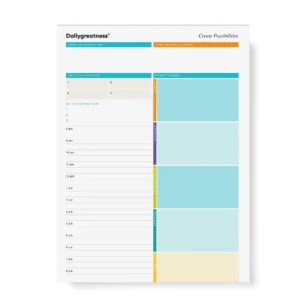Table of Contents
ToggleErgonomics Tips
Ergonomics is the study of making workspaces more comfortable and efficient. It is an important idea in today’s offices.
Understanding ergonomics is not just about being comfortable—it’s about fostering an environment that promotes productivity and reduces the risk of work-related injuries.
Office ergonomics is important for any workplace. It means arranging and using office furniture and equipment to match the user’s needs and job tasks. Using ergonomics in the office makes a workspace that fits the worker. This way, the worker does not have to change to fit the workspace.
The importance of ergonomics goes beyond physical comfort. Reducing physical stress and strain minimises the risk of musculoskeletal disorders, which are common in office settings.
A well-designed and comfortable office can boost productivity. It can also increase job satisfaction and lower absenteeism. This benefits both employees and employers.
The Basics of Office Ergonomics
Ergonomics Tips
The foundation of office ergonomics lies in three key areas: the chair, the desk, and the equipment. A well-adjusted chair is crucial for promoting good posture and reducing the risk of back pain. An ergonomic desk setup that is at the correct height and distance can prevent strain on the eyes, neck, and shoulders.
The way you place your equipment, like the computer, keyboard, and mouse, is important. It helps prevent repetitive strain injuries.
Understanding the basics of office ergonomics involves recognizing the interplay between these three elements. It’s about creating a harmonic balance between them, allowing for a comfortable and efficient workspace.
The application of these basic principles of ergonomics isn’t a one-size-fits-all approach. Each person has unique physical traits and job needs. It is important to adjust the workspace to fit them. An ergonomic workstation should allow for changes in posture and movement throughout the day, promoting a dynamic work environment.
The Role of an Ergonomic Chair in Office Comfort
Ergonomics Tips
An ergonomic chair is a cornerstone of office comfort. It gives support to the back, neck, arms, and legs. This helps lower the chance of aches and pains after a long workday.
Using an office chair designed for comfort can greatly improve your comfort and productivity. An ergonomic chair allows for a wide range of adjustments to accommodate various body shapes and sizes. It has adjustable seat height, backrest, armrests, and lumbar support. This helps the user find the best seating position.
But owning an ergonomic chair isn’t enough—it’s how you use it that counts. Even the most advanced ergonomic chair will not provide the desired benefits if it’s not adjusted correctly. The user must understand how to adjust the chair to match their body dimensions and work environment.
Guide to Correct Chair Position for Optimal Ergonomics
Achieving the correct chair position is critical in attaining optimal ergonomics. When sitting, the feet should be flat on the floor, with the knees at a 90-degree angle. The back should be fully supported by the backrest, with a small gap between the back of the knees and the seat of the chair. The armrests should support the arms while letting the shoulders relax.
Chair height is another crucial aspect of chair position. The desk height should guide the chair height. When seated, the user’s arms should be at right angles while typing or using the mouse. If the chair is too high, it can lead to shoulder and neck strain. If it’s too low, it can cause the user to lean forward, resulting in back pain.
Remember, office ergonomics is not a static concept. Movement is essential. Changing your position often, standing up, stretching, and walking around can help keep your work environment healthy and comfortable.
How to Set Up an Ergonomic Desk
Ergonomics Tips
An ergonomic desk setup is just as crucial as a comfortable chair. The desk should be at a height that allows the user to maintain a neutral body position. The elbows should be in line with the desk, and the wrists should not be bent while typing or using the mouse.
The surface of the desk should have enough space for the user to work comfortably. It should fit all needed equipment, like a computer, keyboard, and mouse. There should also be enough space for the user to move their arms freely.
For those using a standing desk, the same principles apply. The desk should be at elbow height, and the screen should be at eye level. Standing mats can also be used to reduce the pressure on the feet and back.
Office Desk Ergonomics: Proper Placement for Your Computer, Keyboard, and Mouse
The next step to mastering office comfort is ensuring the proper placement of your computer, keyboard, and mouse. These are often used simultaneously and frequently, so their positioning on your desk is crucial to maintaining proper ergonomics.
For the computer, the top of the screen should be at or slightly below eye level. The monitor should be positioned about an arm’s length away to prevent eye strain. If you’re using a laptop, consider using a laptop stand or external monitor to achieve this ideal positioning.
The keyboard and mouse should be placed side by side, with the keyboard directly in front of you. Your elbows should bend at a 90-degree angle when you use them. Your wrists should stay neutral, not bent up or down.
Tips on How to Sit Properly at a Desk for Long Hours
Ergonomics Tips
Sitting properly at a desk is an important aspect of office ergonomics. It reduces the risk of developing musculoskeletal disorders and promotes productivity and well-being at work. Here are some tips on how to sit properly at a desk for long hours:
- Keep your feet flat on the floor. If they can’t reach the floor, use a footrest.
- Maintain a small gap between the back of your knees and the front of your seat.
- Your knees should be at the same level or slightly lower than your hips.
- Relax your shoulders and keep your forearms parallel to the ground.
- Avoid crossing your legs as it can lead to posture-related problems.
- Take regular breaks. Stand up, stretch, and walk around every 30 minutes.
Creating an Ergonomic Workstation: Essential Tools and Tips
Ergonomics Tips
Creating an ergonomic workstation requires more than just a good chair and desk. It involves looking at all parts of the workspace. This includes lighting, noise, temperature, and the tools you use every day.
One of the essential tools for an ergonomic workstation is an adjustable monitor arm. This allows you to position your screen at the correct height and distance to reduce strain on your eyes and neck.
Other tools include a document holder. It keeps your documents at eye level, which reduces neck movement. A footrest supports your feet and helps you sit comfortably. A keyboard tray holds your keyboard at the right height and angle.
Lighting also plays a crucial role in workstation ergonomics. Ideally, your workspace should have plenty of natural light. However, if this isn’t possible, ensure that your workspace is well-lit and that the light source doesn’t cause a glare on your screen.
Health Benefits of a Correct Ergonomic Setup
A correct ergonomic setup can bring numerous health benefits. It can help stop musculoskeletal disorders. It can also reduce eye strain and lower the risk of heart disease.
By promoting good posture, an ergonomic workstation can alleviate back pain, neck tension, and shoulder stiffness. It can also reduce the risk of developing carpal tunnel syndrome and other repetitive strain injuries.
In addition to physical benefits, a well-designed and ergonomic workspace can improve mental well-being. It can reduce stress levels, increase concentration, and boost productivity.
Furthermore, investing in ergonomics can also contribute to job satisfaction and engagement, leading to a happier and healthier workforce.
How to maintain a neutral posture while sitting at work
Ergonomics Tips
Maintaining proper posture is essential, whether you’re working while seated or standing. Follow these six ergonomic tips to achieve a neutral body position and minimize strain:
- Keep your feet flat on the floor or use a footrest for support, ensuring they are in a comfortable and stable position.
- Ensure that your thighs are fully supported by the chair seat, with your hips forming a 90 to 110 degree angle. This helps distribute your weight evenly and promotes good blood circulation.
- The backrest of your chair should support the natural curve of your back, providing adequate lumbar support. Adjust the chair’s tilt and backrest height to achieve optimal comfort and maintain proper spinal alignment.
- Position your upper arms comfortably by your sides, with your elbows forming a 90 to 100-degree angle. Adjust the height of your desk or chair armrests, if available, to support your arms without causing tension in your shoulders or neck.
- Keep your head centered directly above your neck and shoulders, avoiding any forward or backward tilting. Adjust the height and angle of your monitor to ensure your gaze falls naturally at eye level, reducing strain on your neck and eyes.
- Avoid leaning forward in your chair, as it can lead to excessive strain on your neck and back. Instead, sit back and utilize the backrest for support, maintaining an upright and relaxed posture.
By using these ergonomic tips, you can set up a workspace that keeps your body in a neutral position. This helps lower the risk of discomfort and supports your overall well-being while you work.
How to maintain a neutral posture while standing
Ergonomics Tips
As sit-stand workstations and standing desks become more popular, it’s important to keep a good posture to get the most benefits. Here are seven tips to ensure proper posture while working at a standing desk:
- Place your feet on an even surface, comfortably apart, to provide a stable base of support.
- Wear shoes that give good support and cushioning. You can also use insoles to make your feet more comfortable and reduce strain.
- Utilize an anti-fatigue mat with beveled edges that lays flat on the floor. This mat helps lessen discomfort and tiredness in your legs and feet. It makes standing more comfortable.
- Keep your knees slightly bent or unlocked. Do not lock or fully extend them. This helps you stay flexible and prevents strain on your joints.
- Ensure that your upper arms rest comfortably at your sides, with your elbows forming a 90 to 100-degree angle. This position helps reduce tension in your shoulders and promotes a more relaxed posture.
- Keep your wrists in a neutral position, avoiding excessive bending or extension. Avoid pressing your wrists into the edge of the counter or table, as this can lead to discomfort and potential wrist strain.
- Maintain proper alignment by centering your head directly over your neck and shoulders. Avoid slouching or leaning forward, and keep your gaze at a comfortable level.
By using these ergonomic tips, you can improve your posture. This will help reduce discomfort or strain when working at a standing desk. Remember to take breaks, vary your posture, and listen to your body’s cues to find a balance that works best for you.
Move and don't Forget: The 20-8-2 rule
Ergonomics Tips
Even with an optimized workstation setup, it’s crucial to incorporate movement into your predominantly sedentary workday. Building in regular intervals of activity can help improve circulation, prevent stiffness, and enhance overall well-being. A helpful guideline to follow is the 20-8-2 rule. This rule was created by Dr. Alan Hedge, a well-known ergonomics professor at Cornell University. Here’s how it works:
For every half-hour of work, aim to:
- Sit for 20 minutes: Maintain a proper seated posture and focus on your tasks at hand.
- Stand for 8 minutes: Transition to a standing position, utilizing a standing desk or other ergonomic solutions. This change in position helps alleviate prolonged sitting and promotes the engagement of different muscle groups.
- Take a 2-minute break to stretch. You can do simple exercises or light activities to move your body. This brief movement break refreshes your mind, reduces muscle tension, and stimulates blood flow.
Remember, the frequency of position changes throughout the day is just as important as the length of your breaks. By following the 20-8-2 rule, you can create a healthier work routine. This rule encourages movement, improves productivity, and increases your energy levels. Change this guideline to match your work routine. Slowly increase the length of your movement breaks as your body gets used to it.
Ergonomics tools that might help!
Ergonomics Tips
There are various affordable products available that can significantly contribute to maintaining a neutral posture while working. Consider incorporating the following items into your workspace:
- Headsets: Use a headset instead of cradling the phone between your shoulder and neck, as it helps avoid strain and keeps your hands free.
- Mouse bridges/keyboard cushions: Ensure your keyboard is set flat, and rest your raised and level wrists on a cushion. Avoid placing your wrists on the edge of the table or desk. Similarly, position your mouse within easy reach to prevent reaching or straining.
- Adjustable monitor stands: Get adjustable monitor stands to keep your screen at eye level or just below. This is important if you wear bifocals. Center the monitor in front of your keyboard for optimal viewing.
- Use a document holder to keep your papers lined up with your computer screen. This helps you read at eye level. This prevents excessive bending of the neck and facilitates easier reading.
- Risers: If your chair’s height adjustment leaves your feet unable to touch the ground, use a riser as a footrest. This adjustable wedge-shaped product reduces pressure from the chair’s edge and takes the weight off your upper thighs.
- Adjustable chairs: Opt for chairs that offer adjustable height, seat, arm, and reclining features. Make sure your chair is at the right height. Your arms should rest comfortably at your sides. This helps avoid pressure on the table or counter’s edge.
- Sit-stand workstations: Consider using sit-stand workstations to avoid prolonged sitting. However, remember to alternate between sitting and standing throughout the day for optimal benefits. Choose a sit-stand workstation that lets you adjust the desk height. This helps you find your best seated position and keep a good posture.
Mastering Office Comfort: Final Thoughts on Ergonomics in the Workspace
Ergonomics Tips
Mastering office comfort is an ongoing process that goes beyond simply rearranging furniture. It involves understanding ergonomics and using those ideas in your workspace to fit your needs.
Ergonomics is all about finding the perfect alignment between your body and your work environment. It involves optimizing your desk, chair, monitor, keyboard, and mouse to minimize strain and promote proper posture. But it doesn’t stop there. Regular changes are important for comfort. You can move your chair, adjust your desk height, or use ergonomic tools. These small adjustments will help you feel better over time.
By being mindful of your body and its needs, you can prevent common issues such as back pain, neck strain, and eye fatigue. Investing in a chair with lumbar support is a good idea. Position your monitor at eye level. Take breaks to stretch and move around. These are a few ways to create a healthier workspace.
Remember, ergonomics is an ongoing journey, requiring consistent effort and adaptation. It’s not a one-size-fits-all solution. Instead, it is a personalized way to adjust your work environment to meet your needs.
By making these small changes, you can improve your productivity and well-being. This will help create a more comfortable and enjoyable work experience. Start today, embrace the principles of ergonomics, and embark on the path to a healthier and more comfortable workspace.
Take Good Care of your Musculoskeletal System
Ergonomics Tips
Taking care of your musculoskeletal system is crucial to avoid fatigue and promote overall well-being in the office. Here are some essential tips to keep in mind:
- Stay hydrated: Drink plenty of water throughout the day to maintain hydration levels. Proper hydration supports joint lubrication and muscle function, reducing the risk of discomfort or stiffness.
- Incorporate regular exercise: Engage in regular physical activity outside of work hours to strengthen your muscles, improve flexibility, and promote overall musculoskeletal health. Incorporate activities such as stretching, strength training, and cardiovascular exercises into your routine.
- Take stretch breaks: Avoid prolonged periods of sitting by taking regular breaks to stretch your muscles and alleviate tension. Simple stretching exercises for your neck, shoulders, back, and legs can help reduce stiffness. They also increase blood flow.
- Practice good posture: Maintain proper posture while sitting or standing to minimize strain on your musculoskeletal system. Sit with your back straight, shoulders relaxed, and feet flat on the floor. When standing, distribute your weight evenly and avoid slouching or leaning.
- Adjust your workstation ergonomics. Make sure your desk, chair, keyboard, mouse, and monitor are set up correctly. This will help you maintain a comfortable and neutral working posture. Use ergonomic guidelines for the best positioning. Think about using supportive items like an ergonomic chair or a wrist rest for your keyboard.
- Take micro-breaks: Incorporate short breaks throughout the day to change positions, stand up, and move around. These short breaks can help reduce tiredness. They can also improve blood flow. Additionally, they lower the risk of muscle strain from sitting too long or doing the same tasks over and over.
By following these practices, you can support a healthy musculoskeletal system. This can help reduce fatigue and improve your overall well-being at work. Remember to pay attention to your body’s signals. Focus on self-care and make changes as needed. This will help you stay comfortable and productive during the workday.
Affiliate Disclosure:
The links contained in this product review may result in a small commission. This goes towards supporting our research and editorial team and please know we only recommend high-quality products.
Note: This article is for informational purposes only and is not intended to diagnose, treat, or cure any disease. Always consult a healthcare professional before taking any supplement or making any changes to your diet or lifestyle.






